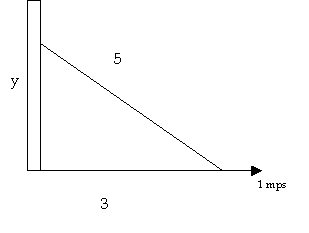2002
Problems
Problem A: School Busing
Consider a school where most of the students are from rural
areas so they must be bused. The buses might pick up all the students
and go to the elementary school and then continue from that school
to pick up more students for the high school.
A clear alternative would be to have separate buses for each
school even though they would need to trace over the same routes.
There are, of course, restrictions on time (no student should
be in the bus more than an hour), drivers, equipment, money and
so forth.
How can you set up school bus routes to optimize budget dollars
while balancing the time on the bus for various school groups?
Build a mathematical model that could be used by various rural
and perhaps urban school districts. How would you test the model
prior to implementation? Prepare a short article to the school
board explaining your model, its assumptions, and its results.
Problem B: The Falling Ladder
A ladder 5 meters long is leaning against a vertical wall with
its foot on a rug on the floor. Initially, the foot of the ladder
is 3 meters from the wall. The rug is pulled out, and the foot
of the ladder moves away from the wall at a constant rate of 1
meter per second. Build a mathematical model or models for the
motion of the ladder. Use your model (or models) to find the velocity
at which the top of the ladder hits the floor and the distance
the top of the ladder will be from the wall at the moment that
it hits the ground.

|

